Wireless Ridge is a battle honour of The Parachute Regiment and took place in June 1982 during Operation Corporate in the Falklands.
Wireless Ridge is one of several hills located close to, and overlooking, the Falkland’s capital, Port Stanley. Major General Frost in his book, ‘2 PARA Falklands – The Battalion at War’, described it as ‘a dual spur feature running eastwards from Mount Longdon. The north-west spur is wide and covered on its flat, open summit by a series of peat ponds, while to the south lied Wireless Ridge proper – a narrow, rocky ridge-line running due east above Moody Brook to form the north side of Stanley Harbour.’ It is entirely overlooked by Mount Tumbledown.
Following the Argentine invasion of the Falkland Islands in April 1982, a British task force, which included several airborne troop elements, was rapidly assembled to retake the islands.
2 PARA won an emphatic victory in the first major land battle of the campaign at Goose Green in May and was deployed again in the engagements to clear the hill ranges around Stanley prior to the final advance into capital.
During the Battle of Wireless Ridge 2 PARA was supported by two batteries from 29 Commando Regiment, Royal Artillery; naval gunfire support from HMS Ambuscade; a troop of light tanks from the Blues and Royals; and elements of 3 PARA who provided fire support. Wireless Ridge was defended by the Argentine 7th Infantry Regiment and detachments from other units.
On 11 June 2 PARA was moved from Fitzroy, by helicopter, to a lying up position to the west of Mount Kent.
At 2300 hours the battalion set off on foot to an assembly area to the north of Mount Kent to support the attack on the first line of hills by 3 PARA, on Mount Longdon, or 45 Commando, on Two Sisters. In the event 2 PARA was not required to help take these hills and the battalion then moved forward a further 15 kms to get into position for an assault on Wireless Ridge. This was postponed for 24 hours to fit in with 5 Infantry Brigade’s delayed schedule.
In that time further intelligence revealed that Argentine forces were assembled on the hill in greater strength than had been anticipated resulting in a last minute change to the battle plan. There was also an air attack by enemy Skyhawks, which although beaten off disrupted the move of the Machine Gun and Mortar Platoons. Consequently theirs and therefore the artillery's fire was registered in the dark.
The battalion moved out at last light (2030 hours) and into its forming up point prior to the fire plan being put into effect. At 0045 hours D Company launched their assault onto an enemy position west of the northern spur (Point X) as phase one of the attack. The Argentines responded with heavy mortar fire but abandoned their positions as D Coy advanced with effective fire support. When the positions were consolidated only a few Argentine dead were found, but D Coy immediately came under fire from the enemy 155 mm guns, using airburst shells.
A and B Coys now began their advance to take the pond covered hill top (Point Z) as part of phase two of the attack. Shortly before the battle a captured Argentine map revealed there was a minefield directly in front of the advancing companies. However it was too late to alter the plan and the Paras pushed on regardless, with most of the men unaware of the hazard. It was fortunate that none of them were blown up.
As they advanced the Argentines could be seen running away. This position proved to be a Regimental HQ and the little resistance shown was soon silenced with over a dozen prisoners taken at first light, who had been found hiding near A Coy’s position! C Coy’s objective, a knoll to the east (Point Y) was also found to have been abandoned.
Whilst A and B Coy reorganised with the Machine Gun and Mortar Platoons, and Blues and Royals light tanks, D Coy moved to the western end of Wireless Ridge prior to their assault. When the assault started considerable resistance was at first encountered and casualties occurred as the enemy mounted a fighting withdrawal from their bunkers. Suddenly, as D Coy closed the Argentines broke and ran. They were harassed all the way by the other callsigns and pursued by D Coy.
The battalion now dug-in as persistent and heavy shelling, which went on for several hours, rained down on them. Luckily most of the shells exploded harmlessly in the peat bog ground.
With daybreak a rather strange and unexpected enemy counter attack of about platoon strength developed from the area of Moody Brook, which was repulsed. This was almost the signal for the complete collapse of all enemy forces, which could be seen streaming away from Moody Brook, Mounts William and Tumbledown, and Sapper Hill.
Permission was eventually gained from the Brigade Commander to advance on Stanley and A Coy, 2 PARA led the first British troops into that town since the Argentine occupation.
After capturing the final objective 2 Para witnessed the retreat of the Argentinian Army back into Port Stanley. The CO ordered a cease fire started to move the Battalion down through Moody Brook when the Brigade Commander arrived and agreed to the Battalion following-up the Argentinian withdrawal. Later the order was received from Brigade to stop. This was ignored. By advancing into Port Stanley the Argentinians sued for peace and the attack planned for that night to capture Port Stanley, which would have entailed fighting amongst the houses where there were still over a 100 civilians, did not take place."
Three men of 2 PARA were killed and eight men wounded during the battle. In contrast the Argentines suffered around 25 men killed and approximately 125 men wounded. The number of Argentines taken prisoner was less than twenty as most fled back to Stanley.

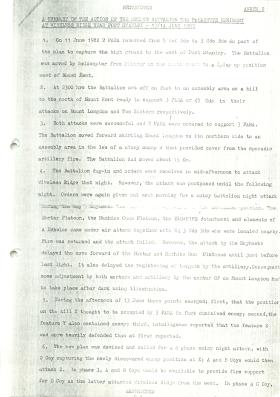
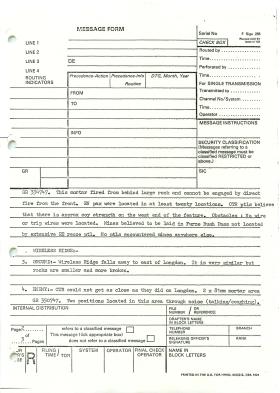
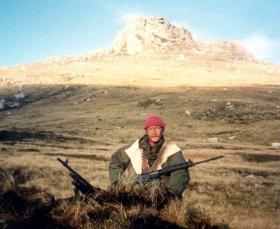

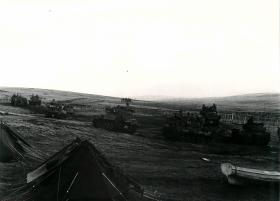
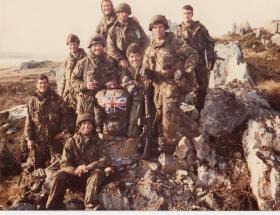
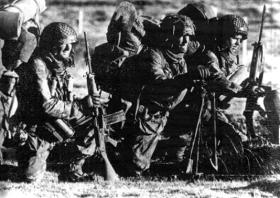



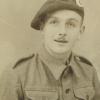
Latest Comments
Add Comment
In order to add comments you must be registered with ParaData.
If you are currently a ParaData member please login.
If you are not currently a ParaData member but wish to get involved please register.